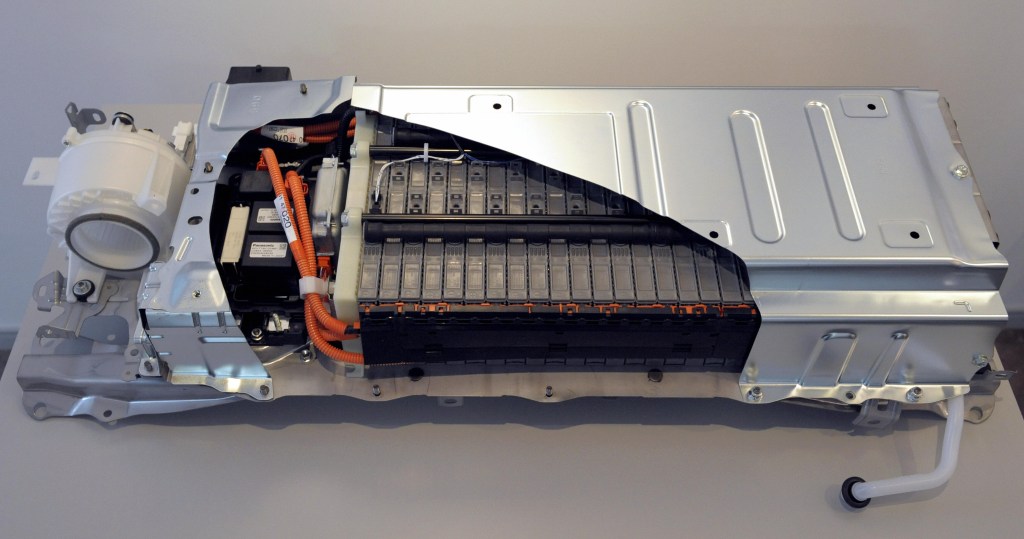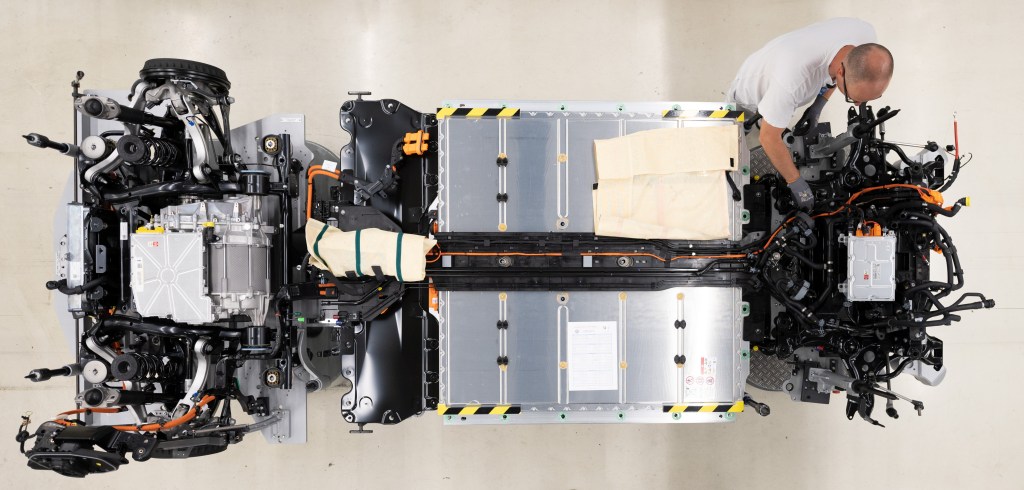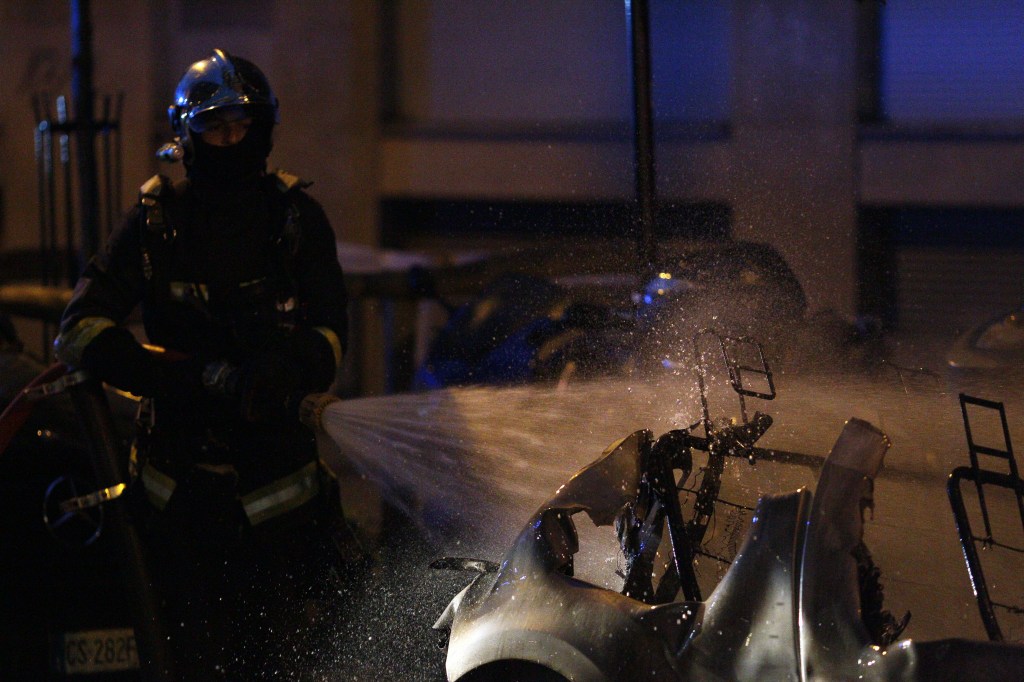
Why Do Electric Vehicle Batteries Catch Fire?
You’ve probably seen videos of people stabbing cell phone batteries with a knife. First of all, don’t. Please, do not. Not smart. Second, that same principle can apply to electric vehicle batteries, making fires dangerous and hard to put out. Now, with the near-widespread acceptance of our EV future, it’s time to examine what causes these fires, as well as why they’re so difficult and dangerous to put out. Finally, we’ll look at the environmental impact of doing so.
Cell rupture and thermal runaway are key

An electric vehicle battery is made up of a few parts. First, there’s that hard metal shell you see above. Below that is where the batteries and the cooling systems are housed. Evidently, the inside of an electric vehicle battery is not somewhere you want things to get. This rupturing is the key to why the majority of EV fires start, as well as why they’re so hard to get out.
Usually, like your phone, an electric vehicle battery is made of a lithium-ion cell. Just like those videos of people puncturing phone batteries, the lithium in an EV like a Tesla reacts violently to air and water. Of course, by violently I mean explosively. Fortunately, this is a pretty rare occurrence. It takes a lot to puncture these cells, and vehicles nowadays often have additional protection to make sure that is never an issue- for you or the fire department.
Electric vehicle batteries can reignite

However, it’s this cellular structure that is both a benefit and a weakness. If a cell is punctured, odds are it’ll do something bad, be it igniting or failing. Of course, if one cell does happen to puncture, there can be a chain reaction. Cell after cell can puncture and burn, and it’s often hard to tell how severe that can be, per NBC. Moreover, it’s difficult to tell when the risk has passed. Slow leaks can cause flare-ups hours or even days later.
So, it’s not necessarily that electric vehicle batteries will just magically catch fire again. Rather, it’s that the chain reaction we’re talking about can often be slow, with cells rupturing and burning at different rates. That’s invariably the biggest danger here. It’s hard for firefighters to tell when fires are out, and once they’re out if they’ll come back.
Water usage is a serious concern

This leaves us with the environmental ramifications. Not only do we have raw lithium and other components making their way out into the world, but it takes an absurd amount of water to get them out. NBC says firefighters used 28,000 gallons to put out the fire that killed two driving a Tesla in April. Compare that with an average of 300 gallons for a petrol fire, and we’ve got a problem. We simply can’t go using that much water to fight fires in vehicles that are becoming more and more common on the road. For now, the best thing for first responders is training, and practices like Tesla’s first responder guidelines.
RELATED:


